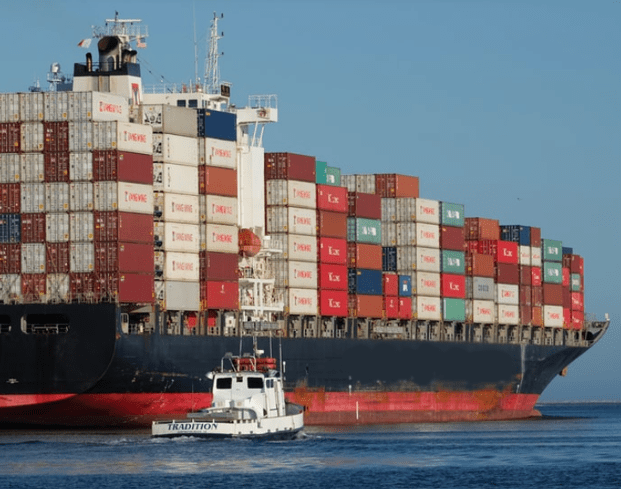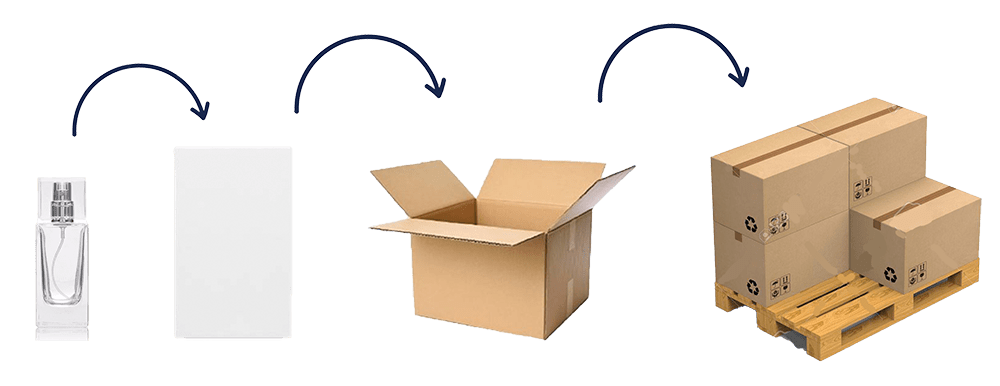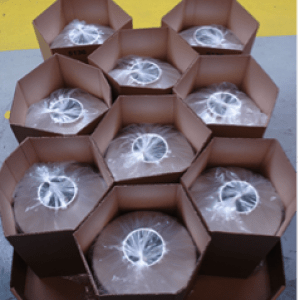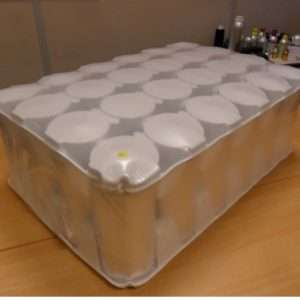Discover the news of the industrial group expert in the protection of sensitive and hazardous materials, as well as the list of trade shows and events in which Tournaire participates.
PROTECTING YOUR SALES PACKAGING TO PROVIDE MAXIMUM SATISFACTION FOR YOUR CLIENTS.

Goods are currently subject to increasingly stringent logistical constraints due to a context of international competition and the need for flexibility during transport. Multimodal transport, repeated loading and unloading, interim storage… all of these are so many occasions when a product might be damaged on its journey from manufacturer to user. Outer packaging and transit packaging are a key link in this chain: let’s see how Tournaire can not only help you protect your product but also its sales packaging.
The role and type of packaging
Transported merchandise is subject to many types of constraint:
Mechanical: risk of crushing when stacking containers, collisions between products/packaging/outer packaging or with cargo handling equipment, friction, exposure to big differences in pressure (changes in altitude, non-pressurized cargo holds for air transport)
- Environmental: exposure to temperatures between -10 and +40 °C on intercontinental journeys, high levels of humidity, exposure to UV rays,
- Pollution of various types: dust, fine particles, insects, acid rain, humidity, etc.
That is why packaging is crucial for protection. Primary, secondary and even tertiary packaging solutions should be studied and optimized to guarantee maximum protection while generating minimum waste, in accordance with European Directive 94/62/CE relating to packaging and packaging waste and its more recent updates, which are even more stringent.
Primary packaging, generally the sales packaging, is in direct contact with the product. It is the product’s first layer of protection and is the smallest item of packaging in use.
Secondary packaging, or outer packaging, is used to group products together. It is an orderly arrangement of primary packaging units for the purposes of larger scale distribution and protection. It should also offer a way of achieving optimal stacking, and its surface should be such that a multiple of it fits into a transit packaging unit. Most often, it is comprised of boxes or lugs.
Tertiary or transit packaging is designed to facilitate the handling and transport of secondary packaging. The aim is to limit handling and damage linked to transit. Most often, it takes the shape of pallets, stacks of pallets or large boxes. Containers used for road, rail, maritime and air travel are not considered to be tertiary packaging.
Depending on the size and nature of the packaged product, there may be even more layers of packaging. Conversely, for bulk industrial products, a pallet crate and an IBC may be sufficient.
Protection adapted to each level
There are many protection solutions which will be chosen depending on the product to protect, the type of packaging, and constraints relating to the usage or logistical chain.
A variety of materials are used: metal, cardboard, plastic (polyethylene, polypropylene, PET, polystyrene, polyurethane, etc.), wood, etc. The choice is based on compatibility with the product or association with the primary packaging, the nature of the protection required, the appearance or identification sought, the packaging and unpacking environment and other elements related to the sale or use of the product and its packaging.
Implementation technologies may be more or less complex: press-forming, folding, cutting, welding, injection, moulding, extrusion, blow-moulding, weaving, etc. They may require changes to the packaging line.
Finally, there are different levels of protection adapted or not to each type of packaging: primary, secondary and tertiary, as mentioned above.
Unitary protection involves separating / isolating / protecting products, sometimes sorting primary packaging units individually. Each element is individually protected by pre-shaped foam, a cardboard tray, a thermoformed tray, a brace, a perforated sleeve, an air cushion, etc.
Group protection involves protecting a limited number of packages using cardboard or plastic trays, loads (or rolls), shrink-wrapping or boxes. Often adapted for secondary packaging.
Finally, the overall protection for the transit packaging, often a full pallet, may be provided by adding reinforcements made from cardboard or wood, air cushions, or protective film.
All of these solutions must be considered in the product’s overall manufacturing, transport and usage chain to anticipate, at the earliest possible stage, both the complexity and the cost of implementing them at a production and logistical level. This type of planning is also required to understand how clients will use and reprocess packaging (ease of opening, safety when handling, waste management, etc.).
Tournaire protects your sales packaging
As a supplier of primary packaging for sensitive products, Tournaire is especially conscious of all of these issues. The company strives to continuously improve the quality of its protection and packaging, in collaboration with its distribution partners and clients, in order to deliver the best possible service for clients.
We currently offer several levels of protection adapted to:
- the type of packaging
- the logistical chain
- our clients’ usage and packaging constraints
- requirements
Unitary protection: the highest level of protection
Here are some examples of recent solutions. Please contact Tournaire if you are interested in any of them or to study the development of a solution specially tailored to your product and its use
- thermoformed polypropylene trays designed to hold each can individually, an ideal solution for small cans, combining grouping and unitary protection.
- cardboard partitions placed between our cans to separate them one by one, protect them from collisions and especially friction caused by transport.
- cardboard “honeycomb” panels which offer individual protection and offer excellent rigidity to each layer – an ideal solution for more voluminous cans.
For group protection, or outer packaging, there are four secondary solutions:
- Cardboard or polypropylene trays
- Polyethylene shrink-wrapped groups of cans,
- Trays protected by shrink-wrap,
- Boxes
These offer both mechanical protection and insulation from external pollution encountered by goods in transit while providing an optimal solution for organizing primary packaging. They also offer axial rigidity for pallet load wrapping.
The thickness of the boxes, the height of the trays and the qualities of the PE shrink wrap and PP trays are chosen to offer maximum protection to cans and bottles.
Finally, our tertiary packaging involves stacking secondary packaging on palettes. These can be made of wood or plastic, and the entire pallet is secured with shrink-wrap. This stage is designed to make handling easier as well as adding the final layer of protection against pollution and mechanical protection for our products. Indeed, depending on the specifications of the cans, the heights of intermediary cardboard trays have been optimized to offer maximum protection to all our cans in the pallet loading configuration. Furthermore, Tournaire is currently working on an operational solution to offer an even higher level of mechanical protection to our pallets.
Thanks to initiatives to continuously improve our offer and close collaboration with clients and partners, Tournaire is delighted to note that the number of damaged products in its cans during transport and related customer complaints have been diminishing sharply for several years (-64% over four years).
Tournaire is there for you at every stage in your packaging usage line, particularly during the logistical phase: please contact us for a tailored protection solution for your containers of choice.


